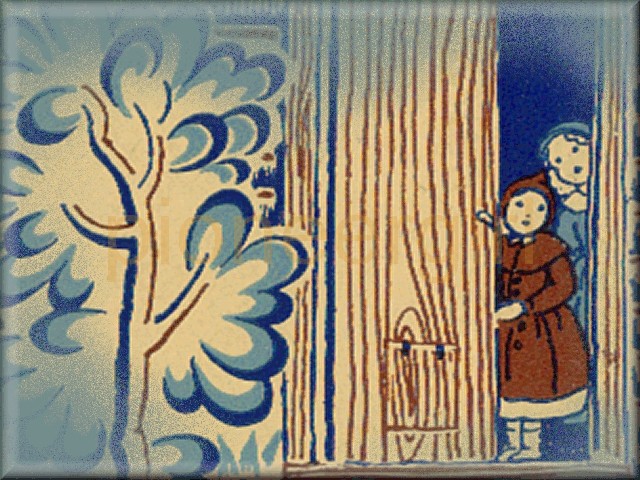cat hole / cat-hole

A small, swinging door, low to the ground for animals, placed within a door for humans.
 Black Susan, the cat, came and went as she pleased, day and night, through the swinging door of the cat-hole in the bottom of the front door. She always went very quickly, so the door would not catch her tail when it fell shut behind her. -Laura Ingalls Wilder, Little House in the Big Woods, Chapter 1, “Little House in the Big Woods”
Black Susan, the cat, came and went as she pleased, day and night, through the swinging door of the cat-hole in the bottom of the front door. She always went very quickly, so the door would not catch her tail when it fell shut behind her. -Laura Ingalls Wilder, Little House in the Big Woods, Chapter 1, “Little House in the Big Woods”

In Little House in the Big Woods, the description of Black Susan’s front door cat-hole leads to Pa telling Mary and Laura a story about a man who had two cats, a big cat and a little cat, so he made two cat-holes in his door. Both Mary and Laura have enough sense to see that two cat doors aren’t really necessary: “But why couldn’t the little cat—”
Apparently Sir Isaac Newton (1642-1727) wasn’t so smart.
That’s right. Sir Isaac Newton has for centuries been credited with inventing the swinging cat door as well as introducing us to calculus, the three laws of motion, and light refraction, among other things. Even in the early nineteenth century, this was a widely-told tale with many variations: Newton had a mother cat with kittens, and he cut two cat doors because he was constantly having to go to the door to let them out or in. Or maybe it was that one cat was wanted to leave his study, and opening the door would would allow too much light to enter the room, thus spoiling the experiment he was working on. It might have happened while he was studying at Cambridge, or maybe later at his home in Lincolnshire, or maybe it never happened at all and was merely made up to show Newton’s known absent-mindedness: “He was so busy he forgot to eat!” or “He can’t remember his own mother’s name!” or “He cut two cat doors; one for the big cat and one for the little kittens!”
 Why did Laura Ingalls Wilder include the story in Big Woods? Did the Ingallses really have a cat door, or was Laura merely including another familiar story known to children, as she did when she used “Old Grimes,” for example? We’ll probably never know, but it has always delighted me that both Helen Sewell and Garth Williams included a cat door in their illustrations fr Little House in the Big Woods. The snippet at right is from an early Garth Williams pen-and-ink drawing, when he was experimenting to decide which medium to use in his illustrations. Pencil won, but you can purchase a copy of this fabulous ink drawing at most of the Laura Ingalls Wilder homesites. The image above shows the Sewell cover for Little House in the Big Woods, with an enlargement of the cat hole shown in the insert.
Why did Laura Ingalls Wilder include the story in Big Woods? Did the Ingallses really have a cat door, or was Laura merely including another familiar story known to children, as she did when she used “Old Grimes,” for example? We’ll probably never know, but it has always delighted me that both Helen Sewell and Garth Williams included a cat door in their illustrations fr Little House in the Big Woods. The snippet at right is from an early Garth Williams pen-and-ink drawing, when he was experimenting to decide which medium to use in his illustrations. Pencil won, but you can purchase a copy of this fabulous ink drawing at most of the Laura Ingalls Wilder homesites. The image above shows the Sewell cover for Little House in the Big Woods, with an enlargement of the cat hole shown in the insert.
In her handwritten Pioneer Girl manuscript, Wilder mentions a cat hole (no hyphen) but once. Black Susan herself is only mentioned six times, and in one story, she is said to run out of the cat hole to hide in the stable when the cousins come for Christmas. Black Susan is only mentioned twice in each of the versions of Pioneer Girl that Rose Wilder Lane ran through her typewriter and tried to peddle, known as the Carl Brandt and George Bye copies. In these, the cat runs through an open door. No cat hole.
You have to be careful with cats and cat doors. A vacationing friend recently came home to find that her cat had spent the week hunting and bringing “fresh meat” into the house… Maybe this is why Pa never cuts a cat-hole for Kitty in the door on the homestead shanty?

cat hole / cat-hole (BW 1; PG)

